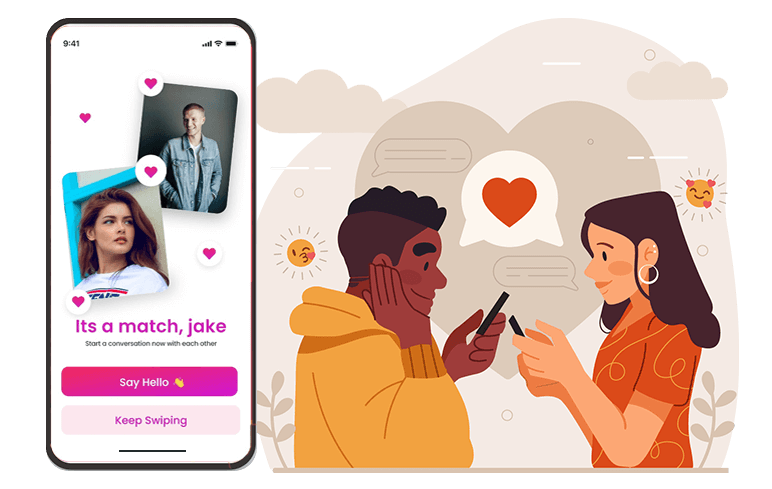
Frustrated by cluttered LinkedIn feeds that make it hard to find valuable content?
There’s a big change coming! LinkedIn just shrunk image previews for free posts, making sponsored content with big, beautiful images stand out more.
This could mean you need to adjust your posting strategy to keep your audience engaged. Learn how these changes impact your LinkedIn presence and how to thrive in the new feed environment!
Why It Matters
Encouraging Native Posting
This change’s main purpose is to increase the rate of native content publication on LinkedIn. Cutting the dimensions of organic post-link preview images is beneficial in solving the problems of unique commentary within the LinkedIn platform.
This transfer helps users share more high-quality content created directly on LinkedIn instead of sharing links, and it can lead the audience to different platforms.
Incentivizing Sponsored Content
This update may force more users/brands to pay for sponsored posts to maintain the larger link previews.
Occupying more space decides the degree of visibility and interest in the messages in the main feed, which makes sponsored posts more appealing in terms of coverage to users who are ready to pay for them.
Through many preview images for sponsored posts, LinkedIn makes brand promotion attractive.
Why We Care
Increased Visibility for Paid Posts
The change incentivizes advertisers to pay for promoting posts to get more visibility with larger link previews.
For brands and professionals who rely on LinkedIn for networking and marketing, including those working with a digital marketing agency Mississauga, this means a strategic shift may be necessary to maintain or increase engagement levels.
Larger preview images are more eye-catching and can draw more attention in a crowded feed, potentially leading to higher click-through rates and more significant interactions.
Impact on Organic Engagement
Smaller link preview images for organic posts could lead to lower engagement rates compared to posts with larger images.
As a result, users and brands may need to adapt their content strategies to continue achieving desired engagement metrics.
This might involve focusing more on creating compelling headlines and descriptions that compensate for the smaller visual footprint of the link previews.
Driving the News
Feed Simplification Update
As part of the “feed simplification” update announced months ago, LinkedIn has made preview images significantly smaller for organic posts that include third-party links.
This move is designed to streamline the user experience and keep members more engaged with content that originates on LinkedIn.
The goal is to reduce clutter and make the feed more about genuine interactions rather than just sharing external content.
Details of the Change
Sponsored posts will still display larger preview images, ranging from 360 x 640 pixels up to 2430 x 4320 pixels.
This significant size difference between organic and sponsored posts highlights LinkedIn’s push towards monetizing content visibility.
For brands, this means that sponsored posts will stand out more prominently, making the investment in web agency services for advertising more appealing.
The Transition from Organic to Sponsored Content
Smaller Organic Previews
The smaller preview images for organic posts are intended to help members stay on LinkedIn and engage more with original commentary rather than external links.
This approach aligns with LinkedIn’s broader goal of becoming a more self-contained ecosystem for professional content and interaction.
By encouraging users to engage with posts directly on the platform, LinkedIn hopes to increase the overall quality of interactions and discussions.
Larger Sponsored Previews
“When an organic post becomes a Sponsored Content ad, the small thumbnail preview image shown in the organic post is converted to an image with a minimum of 360 x 640 pixels and a maximum of 2430 x 4320 pixels,” per LinkedIn.
This conversion ensures that sponsored content remains visually prominent and engaging.
For advertisers, this means their promoted content will have a better chance of standing out in the feed and capturing the attention of their target audience.
What They’re Saying
LinkedIn’s Statement
LinkedIn framed this change to enhance user engagement and keep members interacting within the platform.
By making organic previews smaller, they aim to encourage more original content and less reliance on external links.
This strategy is designed to foster a more active and engaged community, where users share insights and ideas directly on LinkedIn.
Criticism and Concerns
However, some users criticize the move, arguing that it penalizes professionals who don’t have the time to constantly create original posts and rely on sharing third-party content.
For these users, the change adds pressure to either increase their content creation efforts or invest in sponsored posts.
The criticism highlights a potential downside of the change, where users who traditionally relied on sharing valuable external content might feel disadvantaged.
The Bottom Line
Strategic Shift for Brands and Individuals
Brands and individuals looking for maximum engagement from shared links on LinkedIn may increasingly need to pay for sponsored posts.
This strategic shift could lead to higher costs for maintaining visibility and engagement on the platform.
For many, this means reassessing their LinkedIn strategy and possibly reallocating marketing budgets to ensure their content continues to perform well.
Adapting to the Change
To adapt to this new reality, users and brands might need to:
- Increase Original Content: Focus more on creating original posts that don’t rely on third-party links. This could involve sharing unique insights, experiences, and company updates that engage the audience without needing to direct them elsewhere.
- Invest in Sponsored Posts: Allocate part of their marketing budget to sponsored content to ensure larger preview images and higher engagement. This might be particularly important for significant announcements, product launches, or key pieces of content that need to reach a broader audience.
- Optimize Visual Content: Ensure that any content shared, whether organic or sponsored, is visually appealing and engaging to capture attention. This includes using high-quality images, infographics, and videos that can stand out even in a smaller preview format.
Potential Benefits of the Change
Despite this, there seem to be some long-run risks, though often the long- run liabilities are overshadowed by the benefits of the change.
LinkedIn pushes for original content; the overall posts may become better and more useful for everyone, making the feed much more valuable.
To the advertisers, one can reason with simple facts such as the increased preview images for the sponsored content, making it easier for anyone to justify using LinkedIn advertising.
Conclusion
Overall, by downsizing the size of organic link previews and keeping the larger ones for sponsored posts, LinkedIn encourages more native content and paid promotion posting.
Adapting to these changes will be inevitable for the brands and professionals because they will be able to remain visible on LinkedIn and actively engage their audience.
Thus, following the brand’s content creation and discussing the possibilities of investing in sponsored posts might become crucial tactics for using LinkedIn effectively in the context of such a shift.






